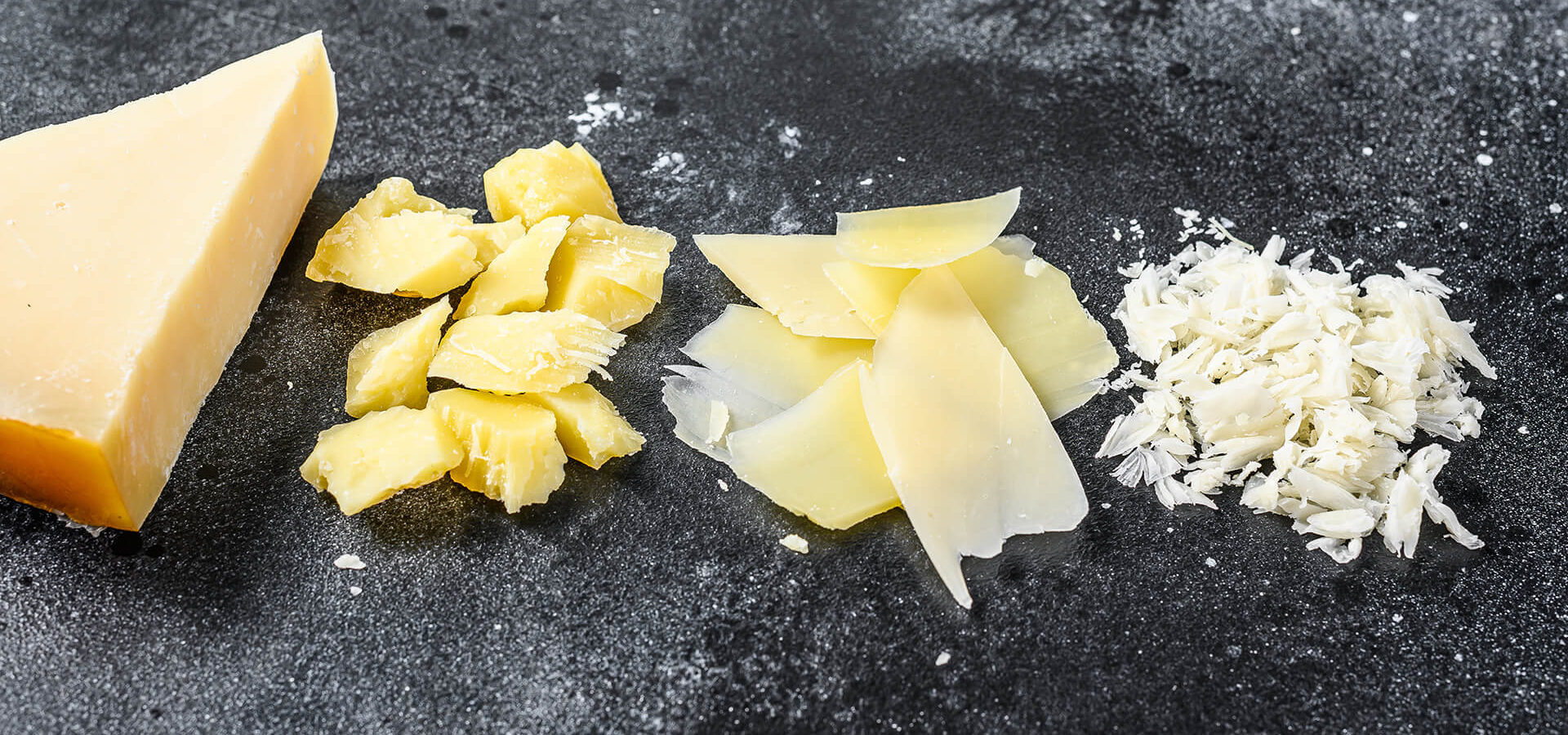One of the most overwhelming parts of the cheese selection process is deciphering the differences between the plethora of cheese types available at the store. Sure, maybe you know if you like cheddar or hate Gouda (does anyone actually hate Gouda?). But when it comes to those cheeses that seem like they’re in the same family but have different names, picking the right one can feel like an impossible task. When you see labels with words like Parmigiano, Romano, and Parmesan, you might wonder if there is actually any distinction at all.
The good news is, the experts at Cello are here to help break down a few of the cheeses that are commonly confused. Let’s chat about Parmigiano-Reggiano, Pecorino Romano, Parmesan, and Romano.
Parmigiano-Reggiano
We’ve talked about PDO status around here before. The Protected Designation of Origin comes from legislation handed down in 1992 to protect regional foods. Parmigiano-Reggiano has PDO status and is only produced in two Northern Italian regions. This hard cheese is golden in color and aged for at least a year, sometimes up to 36 months.
Parmigiano-Reggiano is made from cow’s milk and is much milder than Pecirono Romano or Romano, with a more nutty flavor profile. Genuine Parmigiano Reggiano — with the PDO status— is enveloped with an embossed rind with the name of the cheese lettered onto it. The rind also contains the date of production and seal of approval from the consortium, the organization tasked with enforcing PDO standards. As far as rinds go, this one is not only edible, it’s packed with flavor!
Pecorino Romano
Just like Parmigiano-Reggiano, Pecorino Romano also has PDO status. This cheese is made in Sardinia, a region in central Italy, and is known for being produced from sheep’s milk. The aging period for Pecorino Romano is much shorter than Parmigiano-Reggiano at around five to eight months.
Like Parmigiano, Romano is a hard cheese. But Pecorino Romano is white in color and has a slightly saltier and much stronger, more piquant flavor. While the visual distinctions are a fun and simple way to tell these two Italian cheeses apart, the most important difference is the milk source. Parmigiano-Reggiano is made from cow’s milk, while classic Pecorino Romano is sourced from sheep .
Parmesan & Romano
Parmesan cheese and Romano cheese are domestic versions of Parmigiano-Reggiano and Pecorino Romano. According to the FDA, any cow’s milk cheese with a hard, brittle rind and granular texture, and grates easily, can be labeled Parmesan in the U.S. Our Cello Parmesan cheese is designed for the unique conditions of the Lake County region using select culture and cow’s milk. At Cello, we also age our Parmesan cheese several months longer than domestic Parmesan suppliers, giving our version a stronger flavor profile more similar to traditional Parmigiano-Reggiano.
Cow’s milk and sheep’s milk make very different cheeses. The latter has short-chain and medium-chain fatty acids, while cow’s milk contains primarily long-chain. We know that description is full of scientific jargon, so let’s break down what it means in terms of flavor. You know that slightly gamey taste you get from goat’s milk? Those are the same fatty acids that make an appearance in sheep’s milk. They are not present in cow’s milk, which is what we use to make our Romano.
Did you know?
- Many lactose-intolerant cheese lovers don’t know that both Parmigiano-Reggiano and Parmesan contain no lactose, so those who have to avoid dairy can still snack on all variations of Parm!
- Pecorino Romano and Romano are the better choice for tomato-based dishes (think the shredded cheese you top your spaghetti with). The mild flavor of Parmesan is likelier to get lost in the acidity of the tomato sauce.
Now that you know the facts behind cheese like Parmigiano, Romano, and Parmesan, the true test is the one involving your taste buds. Find your closest retailer that carries Cello cheese to try our Parmesan and Romano variations.
You can use all of these cheeses in your next cheese board. Learn exactly how to pull together an impressive display in our eBook, Creating the Perfect Cheese Board in 9 Easy Steps.





